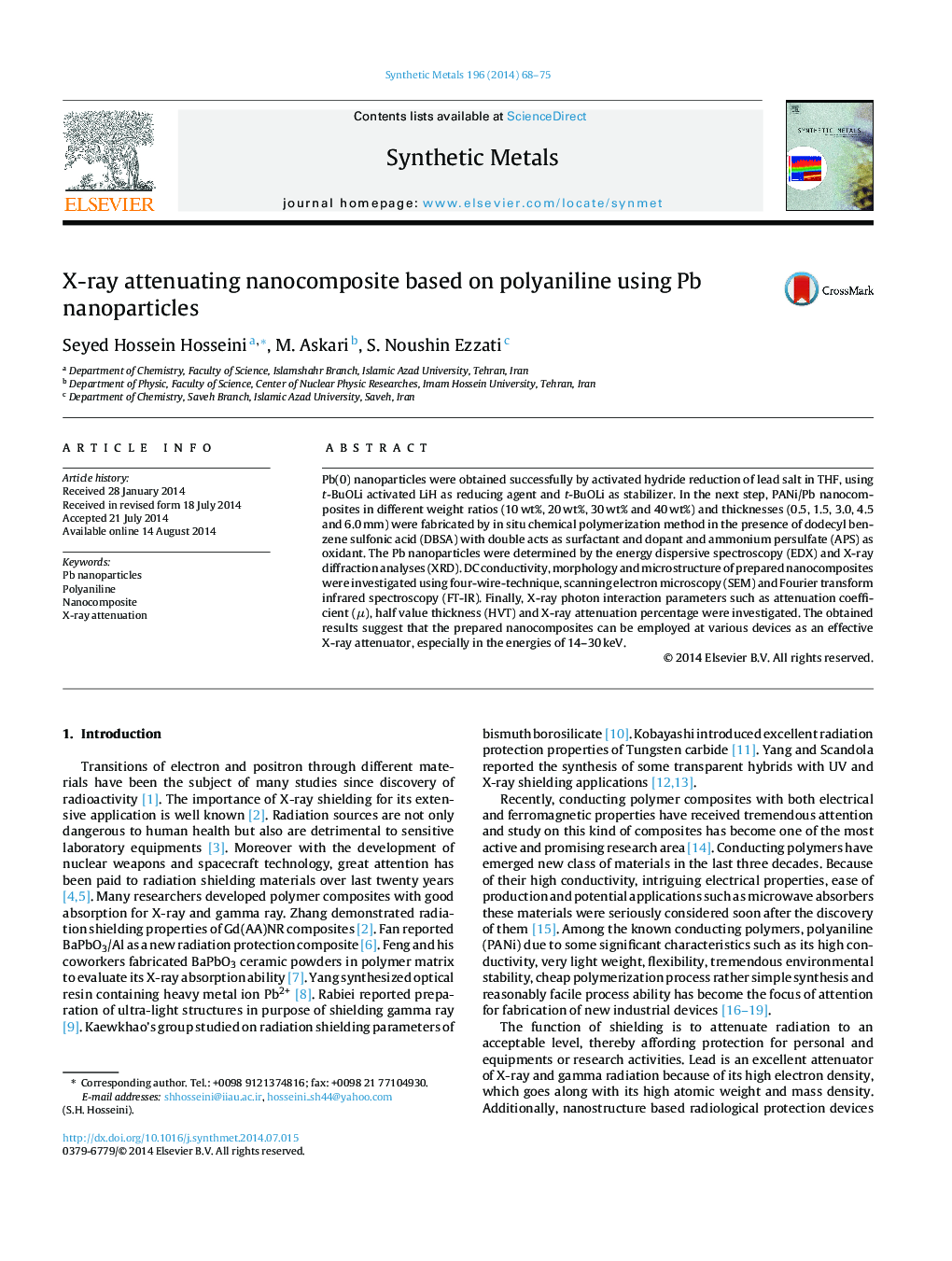| Article ID | Journal | Published Year | Pages | File Type |
|---|---|---|---|---|
| 1440837 | Synthetic Metals | 2014 | 8 Pages |
•The PANi/Pb nanocomposite has shielding structures into mid X-ray.•Increasing concentration of Pb in composite will increased X-ray attenuation ability.•Increasing weight ratios and thicknesses nanocomposite will increased X-ray attenuation ability.•X-ray attenuation ability will decreased by increasing energy of X-ray.
Pb(0) nanoparticles were obtained successfully by activated hydride reduction of lead salt in THF, using t-BuOLi activated LiH as reducing agent and t-BuOLi as stabilizer. In the next step, PANi/Pb nanocomposites in different weight ratios (10 wt%, 20 wt%, 30 wt% and 40 wt%) and thicknesses (0.5, 1.5, 3.0, 4.5 and 6.0 mm) were fabricated by in situ chemical polymerization method in the presence of dodecyl benzene sulfonic acid (DBSA) with double acts as surfactant and dopant and ammonium persulfate (APS) as oxidant. The Pb nanoparticles were determined by the energy dispersive spectroscopy (EDX) and X-ray diffraction analyses (XRD). DC conductivity, morphology and microstructure of prepared nanocomposites were investigated using four-wire-technique, scanning electron microscopy (SEM) and Fourier transform infrared spectroscopy (FT-IR). Finally, X-ray photon interaction parameters such as attenuation coefficient (μ), half value thickness (HVT) and X-ray attenuation percentage were investigated. The obtained results suggest that the prepared nanocomposites can be employed at various devices as an effective X-ray attenuator, especially in the energies of 14–30 keV.
